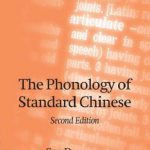Articles in the ‘Advanced’ category Page 34
-
Chinese listening strategies: Improving listening speed
A lack of listening speed is what stops you from understanding spoken Chinese even though you know most of the words and sentence patterns being used. I think the problem is generally overlooked and in this article I explain what listening speed is, why you need it to understand Chinese. I also talk about how to practise listening speed.
Read → -
Language is communication, not only an abstract subject to study
I won’t join the group of language bloggers who claim that classroom learning is meaningless, but I do believe there are good reasons to create links to the real world. Not only is this a motivational booster, it’s also an excellent way of identifying problems you might have with your Chinese.
Read → -
Chinese listening strategies: Active listening
This is the fifth article in my series about improving listening ability. After having covered background and passive listening, the topic this time is active listening, including a discussion of what it is and why it’s good, along with some exercises you can try.
Read → -
Using Lang-8 to improve your Chinese
Learning a foreign language, most people lack proper feedback from native speakers. Even if we have friends and teachers, always having to ask for help isn’t very good. In this article, I explain how Lang-8 solves this problem for you. Useful for any language, not just Chinese!
Read → -
Playing computer games in Chinese: Diablo 3 and Starcraft 2
If you like computer games, why don’t you start playing them in Chinese? It’s not a substitute for other types of studying, but it’s an excellent way of increasing your exposure to Chinese while having fun at the same time.
Read → -
Chinese listening strategies: Passive listening
After having looked at background listening in previous articles, the time has now come to discuss passive listening in more detail. In this article, I provide some thoughts on how to adjust passive listening to your current situation, making it less or more active.
Read → -
Chinese listening strategies: Background listening
Background listening is not a substitute for more active forms of listening practice, but it’s still very useful. Think of it as a way of filling your days with learning opportunities without requiring much extra time.
Read → -
Chinese listening strategies: Problem analysis
Do you know why you don’t understand as much Chinese as you should/want/ought to? When solving a problem, the first step should always be to figure out what the problem is. Simply knowing that we don’t understand spoken Chinese at a certain level isn’t good enough, we need to know more than that if we want to improve. In this article, I discuss various ways of identifying and analysing problems with listening ability.
Read → -
Chinese listening strategies: An introduction
Listening ability is one of the cornerstones of language learning. Not only is it essential if we want to communicate with other people, it’s also necessary if we’re going to expose ourselves to natively produced language and learn from that. This is the introduction to a series of articles discussing listening ability.
Read → -
Review: The Phonology of Standard Chinese
Duanmu San’s “The Phonology of Standard Chinese” is by far the best introduction to Mandarin phonology that I’m aware of. It’s mostly useful for people who like phonology or are already at an advanced level and want to add a theoretical edge. This book contains tons of interesting material, all well-presented and well-argued.
Read →








